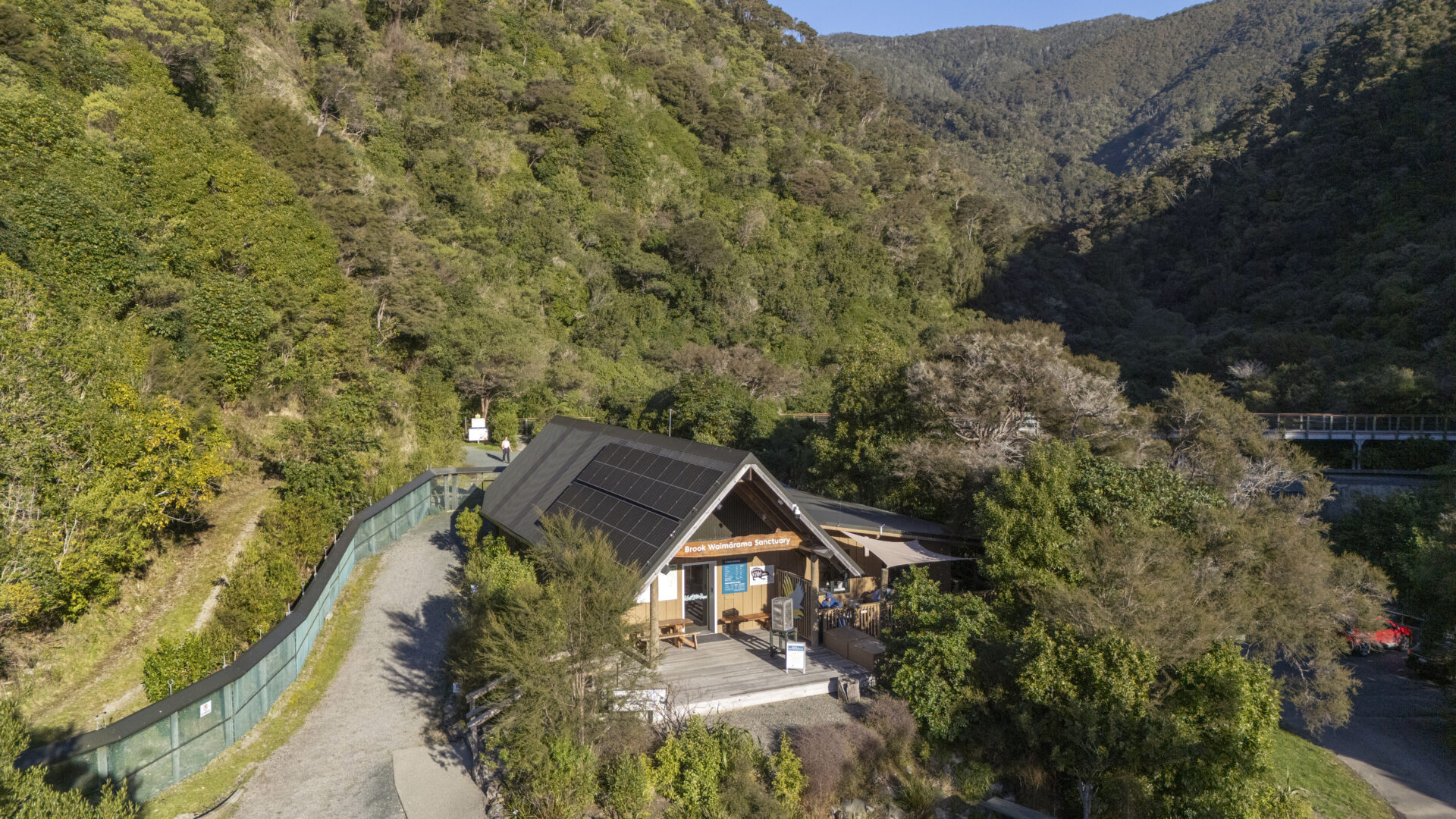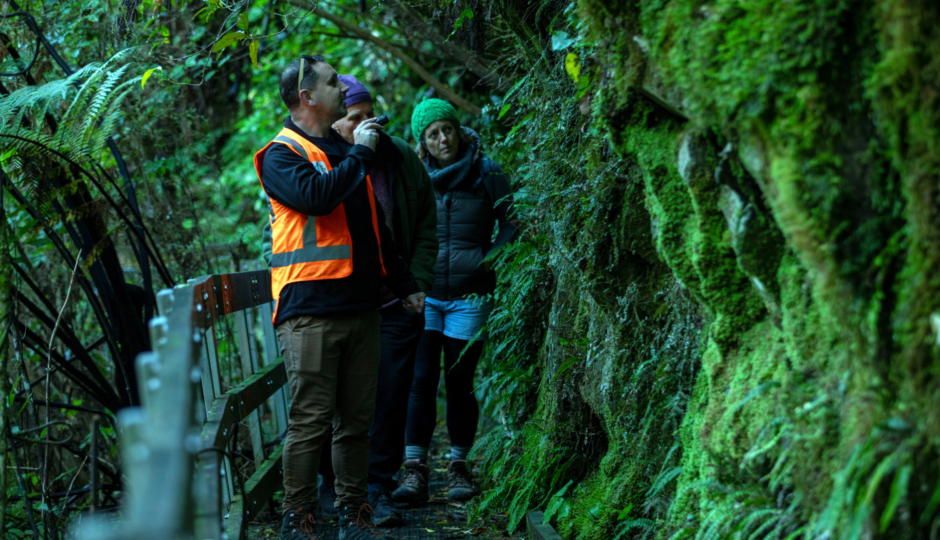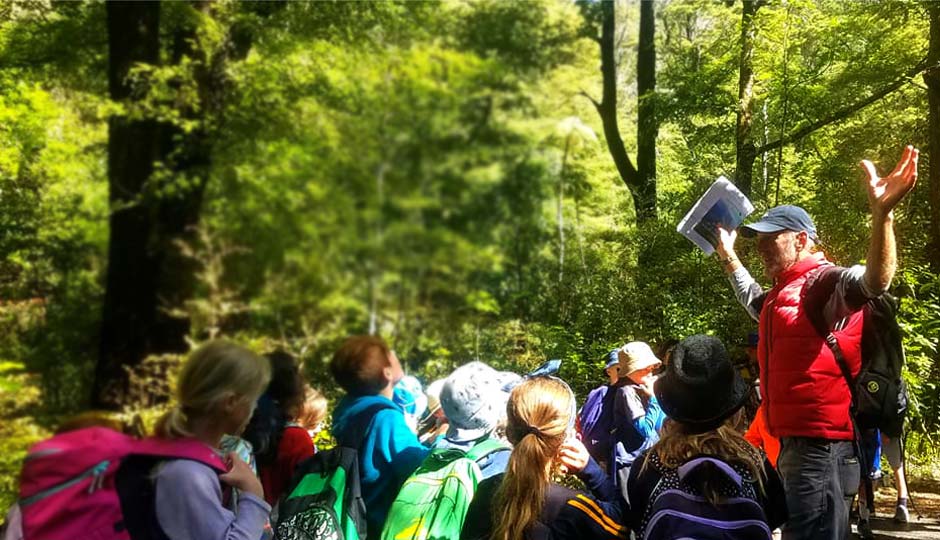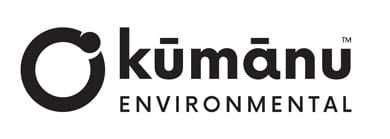Welcome to The Brook Waimārama Sanctuary – an extraordinary part of New Zealand.
Just minutes from Nelson’s city centre, the Brook Waimārama Sanctuary is the South Island’s largest fully fenced eco-sanctuary—690 hectares of protected native forest alive with rare and threatened species. This is a place where you can reconnect with nature, breathe deeply, and experience the mauri (life force) of Aotearoa’s unique environment.
Home to iconic species like the kiwi, tuatara, and kākāriki, the Sanctuary offers self-guided exploration across 15km of walking tracks, as well as guided day and night tours.

Find us on Instagram
Share your photos with #brooksanctuary
🍄 Ngahere Neighbourhood – Russula (under UV light)
Some forest fungi hold secrets only revealed after dark.
This native Russula species grows beneath southern beech (Nothofagus) and kānuka/mānuka (Kunzea and Leptospermum), forming a mutual relationship where trees gain nutrients like phosphorus, and the fungus receives sugars from the roots. Because of this partnership, Russula isn’t found in broadleaf–podocarp forests.
Best known for its colourful cap (in this case, purple) and red-toned stem, the real magic appears under UV light, where its gills glow with a greenish hue.
Russula are commonly known as “brittlegills” (thanks to their easily snapped gills). While difficult to identify, their subtle fluorescence makes them a rewarding find for the curious.
🌌 You might just spot one on our Night Tours (now with UV torches), where glowing fungi, fluorescent lichens, and even glow worms light up the ngahere after dark.
🌿 Ngahere Neighbourhood
There’s more to the Sanctuary than birds! This series celebrates the rich biodiversity thriving in the Brook — a connected community of unsung flora and fauna making the Sanctuary their home.
#NgahereNeighbourhood #BrookSanctuary #Russula #FungiFriday #ForestLife #NightTours #FluorescentFungi #BiodiversityNZ #GlowInTheDarkNature
Jul 10

🟠🟡 Bird of the Year 2025: Meet Our Brightest Residents – Kākāriki Karaka, a Sanctuary Success Story and our Competition Hopeful 🟠🟡
It’s official — we’re proud to be this year’s campaign managers for the kākāriki karaka (orange-fronted parakeet), Aotearoa’s rarest parakeet and one of our most endangered birds.
Once found across Aotearoa, this bright-eyed beauty now survives in just a few South Island valleys and a mix of translocated sites — some successful, some sadly unsuccessful. At the Brook Waimārama Sanctuary, our small but growing population is beginning to thrive.
Our mission over the coming months is to help this underdog go top of the pecking order in @ForestandBird Bird of the Year 2025 — and to shine a light on what makes the kākāriki karaka so special, and so worth saving.
🗳 Voting opens Monday 15 September
📍Follow along as we campaign from the canopy to the comment section
💬 Show your support, spread the word, and get ready to VOTE #1 Kākāriki Karaka
💚 Follow our journey as we introduce you to the secretive world of the kākāriki karaka
📸: Sean McGrath @aptenodytes42 (This gorgeous photo was taken on 1st July here at the Brook Waimārama Sanctuary)
#BirdOfTheYear #KākārikiKaraka #BrookSanctuary #BringingBirdsBack #BOTY2025 #SaveOurNatives #NgahereWhānau #SeanMcGrathPhotography #ForestAndBird
Jul 9

🌿 Ngahere Neighbourhood – Winter Greenhood (Pterostylis alobula)
Winter reveals some of the forest’s best-kept secrets — like the Winter Greenhood, a delicate native orchid blooming now at the Sanctuary.
This small but striking plant often appears in both its leafy rosette and flowering stages at once. Look for its tiny hooded bloom with curled sepals that form a subtle, toothless grin — a distinctive feature if you know where to look.
🪻 Flowering from May to October, it’s easiest to spot in mid-winter, often tucked into the dappled light of lowland forest and scrub.
Widespread and not threatened, this quiet orchid is a lovely reminder of the hidden biodiversity that thrives in the ngahere, even in the cooler months.
🌿 Ngahere Neighbourhood
There’s more to the Sanctuary than birds! This series celebrates the rich biodiversity that calls the Brook Waimārama Sanctuary home — a vibrant community of native flora and fauna living in harmony.
#NgahereNeighbourhood #BrookSanctuary #WinterGreenhood #NativeOrchidsNZ #SanctuaryStories #BiodiversityNZ #PterostylisAlobula #ForestLife
Jul 2

🌿 Kids Go Free These Holidays!
Looking for something fun, local, and nature-filled to do these school holidays? Bring the whānau to the Sanctuary!
🧒 During the July school break, all visitors under 18 get free entry to the Brook Waimārama Sanctuary.
Explore forest tracks, spot native birds, search for fungi, and learn about the amazing species that call this special place home.
📅 Offer valid throughout the July school holidays
📍 Entry via the Visitor Centre – open Wednesday to Sunday, 10am–4pm
🎒 Bring walking shoes, a drink bottle, and a sense of adventure!
No need to book – just turn up and enjoy a wild winter’s day out.
#BrookSanctuary #SchoolHolidays #KidsGoFree #NelsonNZ #FamilyAdventure #NaturePlay #WinterWonders #SupportLocalNature
Jul 1

🐦 Kiwi Check-In: All Tagged and Thriving
Over the past week, the tracked kiwi pukupuku at the Sanctuary have each had their radio transmitters replaced — part of a vital effort to monitor their wellbeing without disturbing them during the upcoming breeding season.
The new transmitters are longer-lasting and will allow for hands-off monitoring over the coming months. Encouragingly, all the kiwi caught for checks were in great condition — all had maintained, and most had even gained weight. That’s not always the case after a translocation, and it’s a strong sign that our new residents are healthy, happy, and adapting well to their new home.
📍 They’ve now been tracked across almost every part of the Sanctuary, steadily spreading out and establishing territories.
As a special thank you during National Volunteer Week, Tamsin from the Save the Kiwi team hosted an engaging kiwi kōrero for our volunteers — complete with kiwi calls, transmitter demos, and even a whiff of kiwi poo! 🥴💚
Ngā mihi to the Save the Kiwi crew and all our volunteers and staff involved in this important mahi.
#BrookSanctuary #BringingKiwiHome #KiwiComeback #SaveTheKiwi #SanctuaryStories #NgahereWhānau #NativeWildlifeNZ
Jun 27

🍄 Go Fungi Spotting with Rebecca!
Join us for a magical wander through the forest floor at the Brook Waimārama Sanctuary — where mushrooms pop, spores fly, and fungi reign supreme!
🗓️ Saturday 28 June
⏰ 9:30am – 11:30am
📍 Brook Waimārama Sanctuary
🎟️ $45 – Limited spots available
Led by the wonderful Rebecca Bowater (award-winning nature photographer and, fungi expert), this guided tour is your chance to uncover the weird and wonderful world of native fungi.
From puffballs to slime moulds, discover the unsung heroes of the ngahere. No science degree needed, just bring your curiosity, walking shoes, and maybe a camera to capture the forest’s tiny marvels.
👉 Book now via our website under Guided Tours & Experiences: Link in bio
#BrookSanctuary #GuidedTour #FungiWalk #RebeccaBowater #NgahereNeighbours #NelsonNZ #NatureWalk #FungiLovers
Jun 25



























